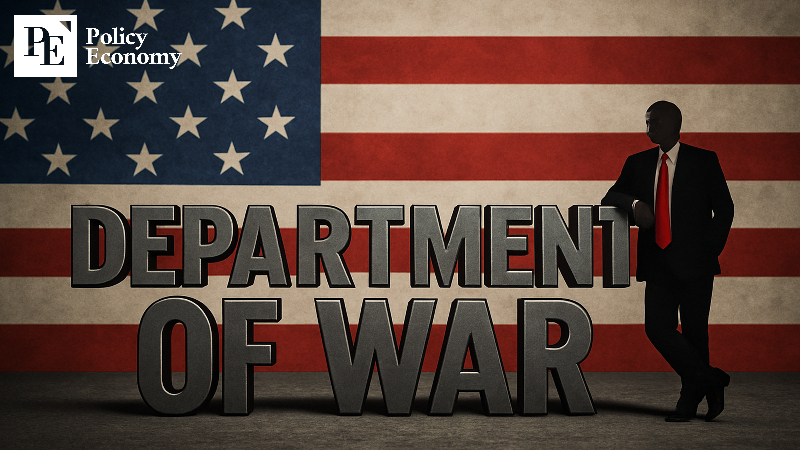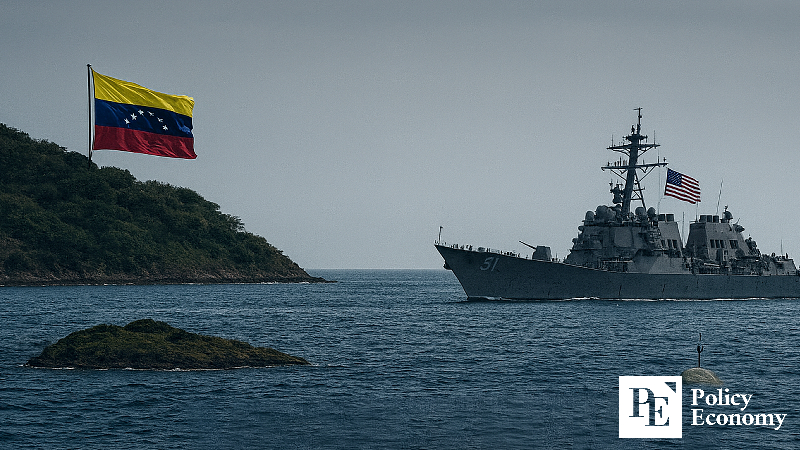Trump Revives ‘Department of War’ Rhetoric as U.S. Strikes Iran and Confronts Venezuela
Input
Modified
Trump says the Pentagon “won wars when it was once called the Department of War.” He signals willingness to go on the offensive, having already struck Iran’s nuclear facilities in June. Military pressure on Venezuela also escalates, raising fears of imminent conflict.

U.S. President Donald Trump has announced plans to rename the Pentagon as the Department of War, signaling not only a defensive posture against foreign threats but also a willingness to take offensive action when deemed necessary. His stance is evident in the June strike on Iran’s nuclear facilities and the ongoing military pressure against Venezuela.
Is the Pentagon Returning to the ‘Department of War’?
On the 25th (local time), President Donald Trump voiced support for renaming the Pentagon during a joint press event with South Korean President Lee Jae-myung at the White House. “If we want to go back to the days when we always won wars, I’m fine with that,” he said, adding, “I don’t just want a department that focuses on defense—we want offense, too.” He noted that the Pentagon had once been called the Department of War, which he argued “sounded stronger,” recalling that “we won World War I and World War II under that name.” The U.S. Department of Defense was originally established as the Department of War in 1789, before President Harry Truman reorganized it in 1947, splitting it into the Army and Air Force, and merging them with the Navy under the new title.
Later, at an executive order signing ceremony, Trump suggested the renaming could take place as early as next week, assigning Defense Secretary Pete Hegseth to oversee the process. When asked whether congressional approval would be required, Trump replied, “I don’t think so. We’ll just do it, and if necessary, Congress will follow.”
This is not Trump’s first hint at reviving the old title. At the NATO summit in June, he referred to Hegseth as “Secretary of War” and remarked that “political correctness is why we started calling it Secretary of Defense.”
U.S. Bombs Iran’s Nuclear Facilities
Global attention is now fixed on President Donald Trump’s recent remarks that the United States “wants offense,” particularly given Washington’s direct strike on Iran’s nuclear sites in June in coordination with Israel. At the time, Trump announced on his social media platform Truth Social that the U.S. had carried out “very successful attacks” on three facilities—Fordow, Natanz, and Isfahan. On June 21, U.S. Air Force squadrons entered southern Iranian airspace and launched airstrikes against the targets he named.
These nuclear sites are located dozens of meters underground within reinforced concrete structures. To penetrate them, the U.S. deployed at least six GBU-57 “bunker buster” bombs, its only weapon capable of destroying deeply buried nuclear facilities without ground operations. In addition, more than 30 Tomahawk missiles were fired, showcasing both America’s ability to eliminate hardened sites and its capacity for precision deterrence.
Experts say the move signals a shift in Washington’s approach toward nuclear-arming states. “For years, the international community tried to restrain Iran’s nuclear development through moderate measures, but those efforts produced little progress,” one foreign policy expert noted. “Iran instead used the time to fortify underground facilities and accelerate its enrichment of uranium. By directly striking Iran’s nuclear sites, the U.S. has effectively declared that the old, cautious approach is no longer enough to stop nuclear proliferation.”

On the Brink of Clash With Venezuela
Speculation is mounting that the United States could soon launch an attack on Venezuela. Last month, President Donald Trump signed a directive instructing the Pentagon to designate South American drug cartels as terrorist organizations and authorize military force against them. Around the same time, Washington labeled Venezuelan crime syndicates as terrorist groups, identified President Nicolás Maduro as their leader, and declared his government illegitimate.
Since then, the U.S. has deployed three Aegis destroyers and P-8 maritime patrol aircraft to Venezuelan waters, along with the Iwo Jima Amphibious Ready Group. The force includes the amphibious transport ships USS San Antonio, USS Iwo Jima, and USS Fort Lauderdale, supported by 4,500 sailors. Among them are 2,200 Marines from the 22nd Marine Expeditionary Unit, a force specialized in conducting special operations.
Given the scale of deployed assets and Trump’s directives, analysts warn that U.S. action could soon go beyond a naval blockade. In response, Maduro on August 18 ordered the mobilization of 4.5 million militia members, vowing to counter American military threats. China has also strongly condemned U.S. military involvement and interference, urging respect for Venezuela’s sovereignty under the U.N. Charter.





















